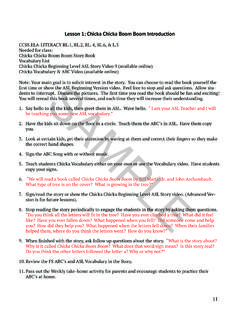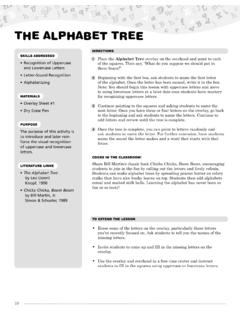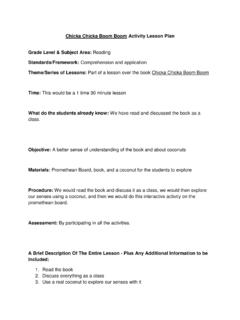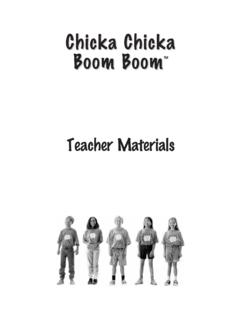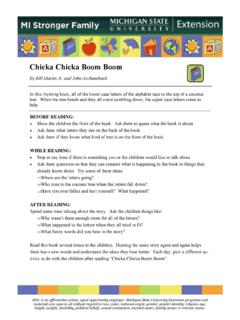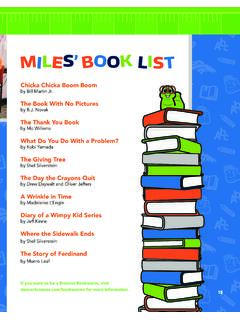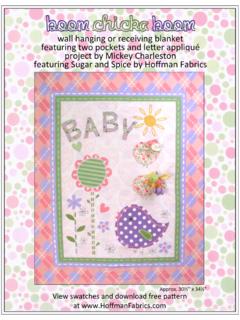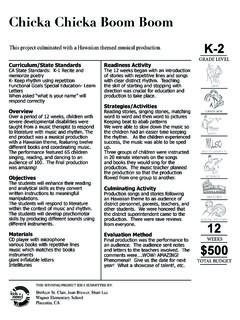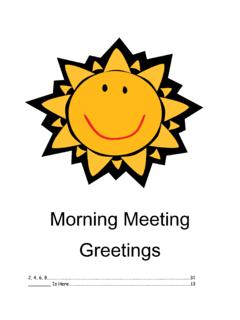Transcription of Stan Ginn Chicka Chicka Boom Boom - Amazon Web Services
1 Stan GinnChicka Chicka boom BoomCinCinnati arts assoCiation, EduCation/Community rElations, 650 Walnut st., CinCinnati, oH 45202 PHonE 513-977-4116, Fax 513-977-4150 , GuideWritten by Stan GinnEdited & Designed by Kathleen RiemenschneiderArtists on TourCincinnati Arts Association Chicka Chicka boom BoomShake Your Groove ThinG (paTTernS)Combining music and mathGoal:To understand pattern as something that repeats :Students create shakers out of a variety of materials and then take turns shaking out a rhythm in a pattern parade around the classroom. During the parade each student will have the opportunity to shake out a rhythm (which can include choreographed elements). The classroom teacher breaks it down into words. For example: 3 fast shakes, a hop, a shake, a hop, a shake, and a slide would be translated into SHAKE SHAKE SHAKE, HOP, SHAKE, HOP, SHAKE, SLIDE and then the class would repeat that pattern, with the teacher calling it out seven or eight times until the students fall into the groove.
2 Then the next student would shake out a new rhythm and the process would repeat. Take some time before to brainstorm ideas for movements (slide, hop, spin, wiggle, etc.). This might also be a good time to discuss dynamics (LOUD LOUD LOUD, soft, soft) if you are so inspired. You could also use the musical terms for loud (forte) and soft (piano) in some of the rhythms (FORTE, piano, FORTE, piano). MaTerialS coulD incluDe:ContainerS glass jars, plastic containers with lids, taped up soda cans, two-liter bottles, cardboard boxes with lids, popcorn, rice, beans, oatmeal, beads, buttons, acTiviTY review: What is a pattern? (a series that repeats forever). Name a pattern using colors. How long will a pattern repeat? (forever) What comes next in this pattern: shake, shake, hop, shake, hop; shake, shake, hop, shake, hop; shake, shake.
3 ? What are dynamics? (loud and soft) What is another word for LOUD? (FORTE!) What is another word for soft? (piano) What is choreography? (scripted movements, as in dance) Cincinnati Arts Association 3 Chicka Chicka boom BoomFill iT up, Break iT Down (voluMe anD piTch)Combining music and mathGoal:To understand the relationship of volume and :Set up eight to ten of the same glass containers and fill them with different levels of water at the front of the room. Lead a brief discussion about pitch. Who can sing me a high note? Who can sing me a low note? Which of the following notes is higher? Have students look at the containers you have set up. Tap a few of them with a spoon. This could be a good time to introduce hypothesis. Can you guess if the next container will be a higher pitch or a lower pitch than this container?
4 Discuss volume and how the volume of water is related to the volume of air in each container. Does the pitch go higher or lower when you increase the volume of water? Volunteers should have a chance to come up and tap out some tune, adjust water levels, etc. MaTerialS coulD incluDe:Ten identical glass containers (jelly jars, iced tea bottles, whatever)Turkey baster (for adjusting water levels)Pitcher of waterRoll of paper towelspoST acTiviTY review: How would you describe the pitch of a sound? (high or low) What is a hypothesis? (making an educated guess) What is volume? (fills a three-dimensional form) How did we make the pitch lower when banging our bottles? (increased the volume of water) Cincinnati Arts Association Chicka Chicka boom BoomnaMe ThaT SounD (MaTerialS anD Their hiSTorical orDer)Combining music and scienceGoal: To familiarize students with common materials and their historical :Collect a variety of different objects made from different materials (wood, plastic, metal, glass).
5 Show them to students. Ask them what material they think each object is made from. Put the materials on a timeline: what came first? When do you think people learned how to work with wood? plastic? etc. Then take all of the objects out of view (or have students close their eyes or turn around). Take turns banging on each object and having them guess what material makes that sound. It will work best if you bang like substances coulD incluDe:wood wooden blocks or boxes banged together or struck with sticks or pencilsmetal tin containers, aluminum pie plates, soda cans, steel cans, forks, spoonsGlaSS baby food jars, jelly jars, iced tea bottles, vases, ceramic mugs, glassesplaSti C plastic toys, plastic lidded containers, garbage cans, laundry basketspoST acTiviTY review: What material (or substance) is this object made out of?
6 Which came first? wood or metal? Which came first? glass or plastic? What is a percussion instrument? (a musical object that you beat, scratch, rub, shake, twist, spin, rattle, roll, drop, throw) Cincinnati Arts Association Chicka Chicka boom Boomlive v Tv! (SiMilariTieS anD DiFFerenceS)Combining music with language artsGoal:To use debate to understand the difference between a live show and a TV :The instructor will lead a short discussion about seeing a live show in a theater setting and seeing something on television or in a movie theater. How are the two experiences the same? How are the two experiences different? What is an audience? What happens in a live performance if someone makes a mistake? What about mistakes in a TV performance? How do you feel when you re watching TV?
7 How do you feel when you see something in a theatre? Is there any difference? After the discussion, the room is divided into two groups: Pro Live and Pro TV. Members of the Pro Live group will write down one way that live performances are cooler than TV shows. Members of the Pro TV group will write down one way that TV is cooler than a live performance. All students will write a persuasive piece arguing their side. Students can read their final sentences out loud and the instructor can stand in as moderator of the debate interjecting questions for clarification and neeDeD:Notecards and pencilspoST acTiviTY review: What is an audience? What is the role of the audience? What is persuasive writing?Cincinnati Arts Association Chicka Chicka boom BoomThe criTic S review (BaSic criTique proceSS)Combining music with language artsGoal:To learn about the 5 Ws and to get students to think critically about the performance they just :Each student will list answers to the following questions: Who was performing?
8 What happened at the performance? (What instruments did they play? What kind of music did they play?) When was the performance? Where was the performance? Why do you think your teacher took you to this performance? (What did you learn?) Then each students will include one sentence describing something they liked about the performance and one sentence describing something they would have changed about the performance. If you are inspired, these could be written up as newspaper articles including illustrations of the :Paper, pencils, possibly crayonspoST acTiviTY review: What are the 5 Ws? (who, what, when, where, why) What is an opinion? (a person s ideas and thoughts or judgments about something) How do you critique something? (describe what you like and what you would change or do differently)
